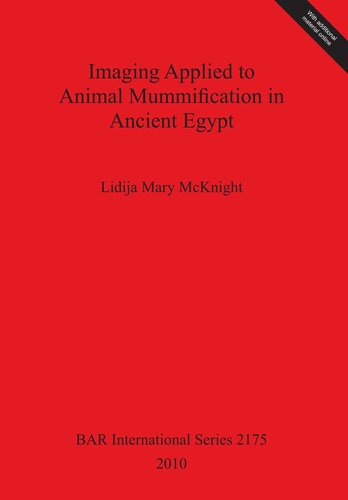

Most ebook files are in PDF format, so you can easily read them using various software such as Foxit Reader or directly on the Google Chrome browser.
Some ebook files are released by publishers in other formats such as .awz, .mobi, .epub, .fb2, etc. You may need to install specific software to read these formats on mobile/PC, such as Calibre.
Please read the tutorial at this link: https://ebookbell.com/faq
We offer FREE conversion to the popular formats you request; however, this may take some time. Therefore, right after payment, please email us, and we will try to provide the service as quickly as possible.
For some exceptional file formats or broken links (if any), please refrain from opening any disputes. Instead, email us first, and we will try to assist within a maximum of 6 hours.
EbookBell Team

0.0
0 reviewsThe Egyptians were the only ancient civilization to intentionally preserve their animal dead using artificial mummification techniques. This practice formed part of a complex belief system which required that the physical remains of the body were preserved in order to ensure continuity of life in the next world. Consequently many thousands of animal mummies survive in the archaeological record, either at the numerous animal necropolises dedicated to the animal gods, or in the collections of museums and private collectors around the world. 127 mummified animals from four museums in Great Britain were studied using conventional radiography (X-ray) and computed tomography (CT) in order to assess the validity and potential of the techniques. The study collection was found to contain the skeletal remains (either partial or complete) of birds, cats, dogs, fish, crocodiles, snakes and rodents, the majority of which are believed to have been manufactured as votive offerings. The radiographic examination of the mummies revealed a wealth of information on both the animals themselves and the techniques which the embalmers had used in order to preserve them. Limited evidence was found to suggest evisceration, evidence of pathological conditions or cause of death; however a great deal of information regarding the positioning of the skeleton, the form of the resulting mummy bundle and the methods of wrapping were highlighted. In conclusion, the study identified the enormous potential of non-destructive radiographic techniques in the investigation of mummified animal material.